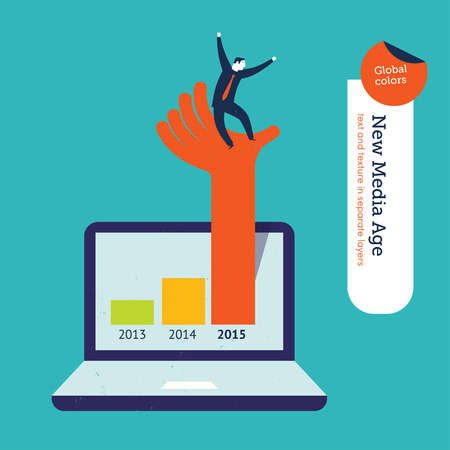Introduction to AI and Technological Developments in the Workplace
The UK workplace is experiencing an unprecedented transformation, driven by the rapid adoption of artificial intelligence (AI) and other emerging technologies. Over recent years, British employers across diverse sectors—from finance and healthcare to logistics and manufacturing—have increasingly integrated sophisticated digital tools to enhance productivity, streamline operations, and improve decision-making processes. This surge in technological uptake is not merely a trend; it reflects a fundamental shift in how work is organised, supervised, and delivered throughout the country. As organisations embrace automation, machine learning, robotics, and advanced data analytics, new questions are arising about their impact on traditional concepts of employer responsibility. The evolving landscape necessitates a fresh examination of employers’ liability risk assessments, as the introduction of AI alters both the risks employees face and the ways employers must respond to those risks. Against this backdrop, understanding the implications of these emerging technologies is crucial for UK businesses intent on remaining compliant with regulatory standards while safeguarding their workforce.
2. Transforming Risk Identification and Assessment Processes
Artificial intelligence (AI) and advanced technologies are fundamentally altering the landscape of employers’ liability risk assessments in the UK. Traditional risk identification, often reliant on manual inspections and standardised checklists, is now being supplemented—and in some cases replaced—by AI-driven solutions that offer enhanced precision, efficiency, and compliance with UK legal requirements such as those set out by the Health and Safety at Work Act 1974 and the Management of Health and Safety at Work Regulations 1999.
AI-Driven Hazard Identification
AI-powered tools utilise real-time data analytics, machine learning algorithms, and sensor technology to identify potential hazards with greater accuracy than conventional methods. For example, wearable devices can monitor workers’ environmental conditions and physiological states, instantly alerting management to risks like heat stress or fatigue. This proactive approach aligns with the UK’s duty of care principles, ensuring employers take reasonable steps to prevent workplace harm.
Comparison of Traditional vs. AI-Driven Methods
| Method | Key Features | Limitations | Legal Compliance Impact |
|---|---|---|---|
| Traditional Risk Assessment | Manual inspections, paper-based reports, subjective judgement | Potential for human error, time-consuming, less responsive to dynamic hazards | May struggle to demonstrate ‘so far as is reasonably practicable’ compliance under UK law |
| AI-Driven Risk Assessment | Automated data collection, predictive analytics, real-time reporting | Initial setup costs, need for digital literacy among staff | Improves documentation and audit trails, supporting regulatory obligations more robustly |
Enhancing Reporting and Decision-Making
With digital platforms powered by AI, incident reporting becomes more streamlined and transparent. Automated systems can flag anomalies and generate comprehensive reports almost instantaneously, reducing delays associated with traditional paperwork. These improvements not only facilitate compliance with mandatory UK incident reporting standards (e.g., RIDDOR) but also provide employers with actionable insights to mitigate future risks.
Overall Impact on UK Employers’ Liability Risk Assessments
The integration of AI into risk identification and assessment enables a shift from reactive to preventative safety management. By leveraging these technologies within the framework of UK regulations, employers can demonstrate a stronger commitment to health and safety responsibilities—thereby reducing liability exposure while fostering a safer working environment.

3. Changing Nature of Workplace Hazards: Tech-Driven Risks
The rapid integration of artificial intelligence and advanced technologies into British workplaces is fundamentally altering the traditional landscape of employer liability. With these developments, employers must now contend with new categories of risk that extend far beyond physical health and safety. The rise of data-driven operations introduces significant challenges around data privacy. Employers are increasingly responsible for safeguarding sensitive employee and client information in compliance with UK regulations such as the Data Protection Act 2018 and the UK GDPR. A failure to adequately protect this data can lead to substantial fines, reputational damage, and increased liability exposure.
Another emerging concern is algorithmic bias. As AI systems take on greater roles in recruitment, performance appraisal, and workplace management, there is growing scrutiny over whether these algorithms operate fairly. Discriminatory outcomes—whether intentional or inadvertent—can expose employers to claims under the Equality Act 2010. Employers must ensure that their technological solutions are transparent, auditable, and regularly reviewed for compliance with anti-discrimination legislation.
Cybersecurity threats have also escalated as a direct consequence of digital transformation. Phishing attacks, ransomware incidents, and data breaches pose not only operational risks but also legal liabilities if it is found that an employer failed to implement reasonable security measures. The modern British workplace requires robust cyber resilience strategies; this includes staff training, regular security audits, and incident response planning in accordance with best practices endorsed by the National Cyber Security Centre (NCSC).
In summary, the nature of workplace hazards has evolved from primarily physical risks to encompass complex technological vulnerabilities. Employers must adopt a holistic approach to risk assessment that addresses these tech-driven threats within the context of current UK legislative frameworks. Only by doing so can organisations remain compliant and resilient in a rapidly changing employment landscape.
4. Impact on Employers’ Legal Duties and Compliance
As artificial intelligence (AI) and advanced technologies become integral to UK workplaces, employers must reconsider their legal responsibilities under a changing risk landscape. The core duty of care remains, but its application is expanding as new risks emerge from automation, data-driven decision-making, and remote working arrangements. Here’s how these developments are influencing compliance with established legislation and shaping future obligations.
Duty of Care: Evolving Expectations
UK employers have a fundamental duty to ensure the health, safety, and welfare of employees, as outlined by common law and statutory requirements. With the integration of AI systems, this duty now includes:
- Ensuring AI tools do not introduce unforeseen hazards or biases
- Providing adequate training for staff interacting with new technologies
- Monitoring mental health impacts linked to digital surveillance or algorithmic management
Health and Safety at Work Act 1974: Key Requirements in a Tech Context
The Health and Safety at Work Act 1974 (HSWA) remains the principal framework. However, technological advancements require reinterpretation of several key sections:
| HSWA Provision | Traditional Focus | Emerging Tech Risk Considerations |
|---|---|---|
| s.2(1): Duty to Employees | Safe premises, equipment, procedures | Safe implementation of AI/automation; data security; algorithmic transparency |
| s.3(1): Duty to Non-Employees | Protecting visitors, contractors | Third-party access to digital platforms; data privacy for clients/public |
| s.7: Employee Responsibilities | Cooperation with safety measures | Adequate digital literacy; understanding tech-related risks |
| s.9: No Charge for Safety Measures | No cost for PPE/training | No charge for access to essential software or cybersecurity tools |
Adapting Compliance Strategies for a Digital Workplace
Employers must proactively update risk assessments and policies to reflect technology-driven threats such as cyber-attacks, misuse of automated tools, or ergonomic risks from prolonged screen use. This involves:
- Regularly reviewing AI systems for potential harm or discrimination
- Consulting with employees on the introduction of new tech solutions (as per s.2(6) HSWA)
- Liaising with regulators and following evolving guidance from the Health and Safety Executive (HSE)
- Documenting digital risk assessments alongside traditional health and safety reviews
The Importance of Ongoing Training and Awareness Programmes
A robust compliance programme in this environment must prioritise continuous education about emerging tech risks. Employers should tailor training sessions to address both technical updates and ethical considerations posed by AI adoption.
Conclusion: Staying Ahead of the Curve
The legal landscape is clear: UK employers cannot afford to treat technology as an afterthought in their liability risk assessments. Proactive adaptation ensures not only legal compliance but also the sustained wellbeing and trust of the workforce.
5. Practical Implications for Risk Management Strategies
As artificial intelligence and emerging technologies reshape the workplace, UK employers must take a proactive approach to revising risk management frameworks. Effective adaptation involves not just the adoption of new tools but also the recalibration of existing policies to mitigate novel exposures and comply with evolving legal standards.
Reviewing and Updating Risk Assessments
The integration of AI into business operations requires employers to revisit their risk assessment procedures. This means identifying new risks associated with automation, such as algorithmic bias, data security breaches, or errors in automated decision-making. Best practice dictates regular reviews of these assessments, ensuring that they remain relevant as technology evolves and are aligned with the Health and Safety at Work Act 1974 and subsequent regulations.
Staff Training and Digital Competence
With technology advancing rapidly, staff training programmes should be updated to cover digital literacy, safe usage of AI-driven systems, and awareness of cybersecurity threats. Employers must ensure that employees understand both the benefits and limitations of new technologies. Embedding regular training sessions and scenario-based exercises can help foster a culture of safety and compliance, reducing the likelihood of human error when interacting with sophisticated systems.
Insurance Policy Adjustments
Traditional employers’ liability insurance may not fully address the risks introduced by AI and automation. UK employers are encouraged to consult with insurers about policy enhancements or specialised coverage, such as cyber liability insurance or cover for technology-specific incidents. A thorough review of policy wordings is advisable to ensure sufficient protection against claims arising from technological failures or misuse.
Embedding Continuous Monitoring and Reporting
Risk management is not a one-off exercise; it necessitates ongoing monitoring. Employers should implement mechanisms for continuous tracking of technological performance, incident reporting, and analysis of near-misses involving automated processes. Leveraging real-time analytics tools can provide early warning signals and enable swift remedial action.
Engagement with Regulatory Developments
Finally, keeping abreast of regulatory changes is vital. The UK’s approach to AI governance is evolving, with increasing emphasis on accountability and transparency. Employers should designate responsible officers to monitor updates from regulatory bodies such as the Health and Safety Executive (HSE) or Information Commissioner’s Office (ICO), ensuring organisational compliance and readiness for future legislative shifts.
6. Future Outlook: Regulatory and Ethical Considerations
As AI and technology continue to reshape employers’ liability risk assessments, the regulatory landscape in the UK is poised for significant evolution. Anticipated regulatory developments will likely focus on ensuring transparency, accountability, and fairness in the deployment of AI-driven systems within workplaces. The UK government and regulatory bodies such as the Information Commissioner’s Office (ICO) and the Health and Safety Executive (HSE) are already signalling their intent to introduce more robust guidelines and frameworks specifically tailored to emerging technologies.
Anticipated Regulatory Developments
One can logically expect that forthcoming regulations will address key issues such as data protection, algorithmic bias, and the safe integration of automated decision-making tools. The introduction of the EU’s AI Act, although not directly binding in the UK post-Brexit, is influencing domestic discourse and may serve as a blueprint for British policymakers. Employers should prepare for possible mandatory risk assessments related to AI usage, documentation of decision-making processes, and clearer lines of liability where technology is involved.
Ethical Challenges in AI Adoption
The ethical dimension cannot be understated. Employers must navigate dilemmas around surveillance, privacy, and potential discrimination arising from automated HR or safety systems. Transparency in how algorithms assess risks or make employment-related decisions is paramount to building trust among employees. There is also a growing expectation that organisations will conduct regular audits of their AI systems to identify unintended consequences or biases, aligning with best practice guidelines even before they become legal requirements.
Proactive Engagement with Emerging Standards
Given this dynamic environment, it is prudent for UK employers to engage proactively with both regulatory developments and evolving ethical standards. This includes participating in industry consultations, adopting voluntary codes of conduct, and investing in staff training on responsible AI use. By staying ahead of statutory changes and embedding ethical considerations into operational processes, employers can not only mitigate liability risks but also enhance organisational resilience and reputation in an increasingly tech-driven world.

